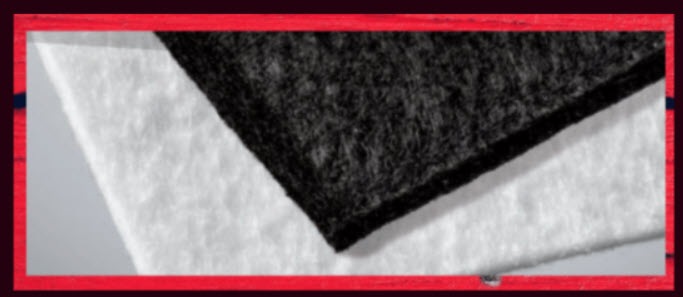15 Mil Fire Retardant, String Reinforced Vapor Barrier: A Tough Protector for Your Projects
Building projects require careful consideration of various factors, including fire safety and moisture control. A 15 mil fire retardant, string-reinforced vapor barrier offers a powerful solution for both. This blog dives into this versatile material, exploring its applications and the benefits it brings to your projects.
What is a 15 Mil Fire Retardant, String-Reinforced Vapor Barrier?
Imagine a heavy-duty plastic sheet, typically 15 millimeters (or 0.015 inches) thick. This isn't your ordinary plastic; it's a fire-retardant vapor barrier with a secret weapon – string reinforcement. This internal mesh of strong threads enhances the barrier's tear and puncture resistance.
Why Use a Fire Retardant, String-Reinforced Vapor Barrier?
This unique combination of features – fire resistance and enhanced strength – makes the 15 mil barrier ideal for various construction applications:
1. Behind Wall and Ceiling Cladding (Fire Blocking): Installed behind materials like drywall or paneling, it creates a fire barrier that can slow the spread of flames within a building, buying precious time for evacuation and fire control.
Example: Fire blocking behind drywall in residential homes, apartment buildings, or commercial spaces.
2. Under Slab Applications (Moisture and Radon Control): Laid beneath concrete slabs in basements or crawlspaces, it acts as a moisture barrier, preventing ground moisture from entering the living space. In some cases, it can also help control radon gas migration.
Example: Moisture barrier under a concrete slab in a basement home theater or a crawl space beneath a cabin.
3. Roof Decking (Moisture Protection): Placed beneath roof decking materials like plywood or oriented strand board (OSB), it protects the roof structure from moisture infiltration caused by rain or snowmelt.
Example: Moisture barrier under roof sheathing on a new home construction project or a shed addition.
4. Behind Brick Veneer (Moisture Control): Installed behind a layer of brick veneer on an exterior wall, it prevents moisture from penetrating the building envelope and damaging the interior structure.
Example: Moisture barrier behind a decorative brick facade on a commercial building or a residential fireplace surround.
5. Around Plumbing Pipes (Moisture and Condensation Control): Wrapped around pipes running through unconditioned spaces, it helps prevent condensation and potential corrosion issues.
Example: Moisture barrier around exposed plumbing pipes in a crawlspace or a basement.
6. Around HVAC Ducts (Moisture and Airflow Control): Wrapped around HVAC ductwork, it minimizes moisture transmission and leakage, promoting energy-efficient heating and cooling.
Example: Moisture and air barrier around HVAC ducts in an attic or a mechanical room.
7. Temporary Wall and Ceiling Enclosures (Construction Protection): During construction, it can be used to create temporary weatherproof enclosures for walls and ceilings, protecting building materials and ongoing work from the elements.
Example: Temporary weather barrier for a new home under construction during rainy season.
8. Behind Appliances (Moisture and Heat Control): Installed behind appliances like dishwashers or refrigerators, it can help manage moisture and some radiant heat, protecting walls from potential damage.
Example: Moisture barrier behind a dishwasher in a newly remodeled kitchen.
9. Greenhouse Vapor Control (Moisture Management): Strategic placement within a greenhouse helps manage humidity levels and create a more controlled environment for plants.
Example: Interior vapor barrier in a greenhouse to control humidity for orchids or other moisture-sensitive plants.
10. Emergency Shelter and Tarpaulin Applications: Due to its strength and fire-retardant properties, it can be used for temporary emergency shelters or as a heavy-duty tarpaulin in specific situations.
Example: Temporary fire-resistant shelter during a disaster relief operation.
The 15 mil fire retardant, string-reinforced vapor barrier offers a unique combination of strength, moisture control, and fire resistance. By understanding its various applications, you can leverage this versatile material to enhance the safety, durability, and overall performance of your construction projects.








